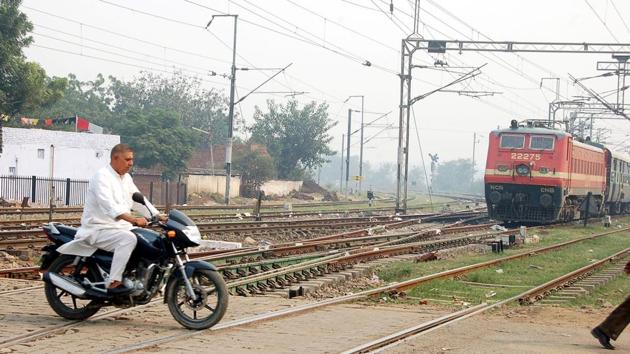Kushinagar tragedy highlights Uttar Pradesh’s problem of unmanned railway crossings
The northern state has over 800 crossings that are either unmanned or neglected. Although Railway officials claim to be doing their best to minimise accidents at such spots, accidents continue to occur on occasion.
The death of 13 children in a ghastly accident involving a train and a school van in Kushinagar on Thursday has once again brought the problem of unmanned railway crossings in Uttar Pradesh to the fore.

The state has over 800 crossings that are either unmanned or neglected. Although Railway officials claim to be doing their best to minimise accidents at such spots, accidents continue to occur on occasion.
Uttar Pradesh is largely covered by three railway zones – the North Eastern Railway (NER), Northern Railway (NR) and North Central Railway (NCR). Of all such unmanned railway crossings, NER has the maximum at 633 (with as many as 196 coming under Lucknow division alone).
“We are working towards turning unmanned crossings into manned crossings on a war footing. We aim to eliminate all unmanned railway crossings in the next three years,” said Sanjay Yadav, chief public relations officer (CPRO) of the NER.
NR happens to be the next on the list, with over 121 unmanned railway crossings. NR CPRO Nitin Choudhary said they hope to eliminate unmanned crossings by 2020.
NCR has the minimum number of unmanned crossings, at 75. “There were 154 unmanned railway crossings in our division at the start of 2017-18. While we were given the target of reducing it to 73, we brought it down to 75. The remaining will be eliminated in the coming year,” said NCR CPRO Gaurav Krishna Bansal.
Crossing mitras
The NER, NR and NCR claim to have deployed volunteers who help ensure safe passage of vehicles, dubbed as “crossing mitras”, at all unmanned level crossings under their jurisdiction.
“We have deployed crossing mitras at all such places. Working in two shifts, they sound the alarm whenever a train passes through an unmanned level crossing. While most of them are private individuals, we have deployed home guards too,” the NER CPRO said.
Alarm chips
Railways officials have also hinted at the possible installation of special chips developed by the Indian Space Research Organisation in locomotives to prevent accidents. The chip would help track train movements on a real-time basis, and can be programmed to automatically turn sirens on at unmanned level crossings.
“The project has currently been installed on a trial basis on Rajdhanis bound for Guwahati and Mumbai. Hooters have also been installed at around 20 unmanned crossings along the route. It will be used on other trains and routes once all the tests are cleared,” a senior NER official said.
Deadline March 2020
Meanwhile, Railway Board chairperson Ashwani Lohani on Thursday said that the Railways aims to eliminate all unmanned level crossings by March 2020.
Addressing a press conference, Lohani said as many as 109 accidents have occurred at unmanned level crossings across the country since 2014-15. Referring to Kushinagar incident, he said: “A rail mitra at the spot tried to stop the school van, but he did not listen. This is the first accident to occur at an unmanned level crossing this year.”
There are 3,479 unmanned level crossings on the broad-gauge network of the Indian Railways.
(With ANI inputs)






